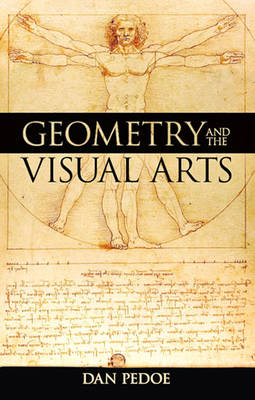
- Afhalen na 1 uur in een winkel met voorraad
- Gratis thuislevering in België vanaf € 30
- Ruim aanbod met 7 miljoen producten
- Afhalen na 1 uur in een winkel met voorraad
- Gratis thuislevering in België vanaf € 30
- Ruim aanbod met 7 miljoen producten
Zoeken
€ 20,95
+ 41 punten
Omschrijving
The origins of geometry are rooted in the ancient civilization of Egypt and Babylon. The Greeks developed its primitive beginnings into a science changing forever man's concept of space and proportions. In this lucid work, noted professor of mathematics Dan Pedoe (University of Minnesota) takes a provocative look at the crucial importance of geometry in the development of Western aesthetics. The author traces the effects of geometry on artistic achievement and clearly discusses its fundamental importance to artists, scientists, architects, philosophers, and others.
Special chapters focus on Vitruvius, Albrecht Dürer, and Leonardo da Vinci, clearly outlining the interrelationship of their own artistic development and the guiding principles of geometry. 136 figures illustrate the text in addition to 24 plates. This wide-ranging survey addresses a broad expanse of intellectual territory, covering: projective geometry, mathematical curves, theories of perspective and architectural form, concepts of space and much more; making precise and perceptive references to the works of Plato, Walt Whitman, Pythagoras, Shakespeare, Einstein, Michelangelo, Swift, van Gogh, and other great minds.
Exercises are given at the end of each chapter for those who wish to experience the aesthetic appeal of geometry by carrying out simple constructions, inventing patterns, drawing and stitching curves and envelopes, and finally, venturing into the students, teachers, and all those who delight in the beauty of geometric forms, the work is an indispensable addition to your bookshelf and a lasting delight to the mind and eye.
Special chapters focus on Vitruvius, Albrecht Dürer, and Leonardo da Vinci, clearly outlining the interrelationship of their own artistic development and the guiding principles of geometry. 136 figures illustrate the text in addition to 24 plates. This wide-ranging survey addresses a broad expanse of intellectual territory, covering: projective geometry, mathematical curves, theories of perspective and architectural form, concepts of space and much more; making precise and perceptive references to the works of Plato, Walt Whitman, Pythagoras, Shakespeare, Einstein, Michelangelo, Swift, van Gogh, and other great minds.
Exercises are given at the end of each chapter for those who wish to experience the aesthetic appeal of geometry by carrying out simple constructions, inventing patterns, drawing and stitching curves and envelopes, and finally, venturing into the students, teachers, and all those who delight in the beauty of geometric forms, the work is an indispensable addition to your bookshelf and a lasting delight to the mind and eye.
Specificaties
Betrokkenen
- Auteur(s):
- Uitgeverij:
Inhoud
- Aantal bladzijden:
- 320
- Taal:
- Engels
- Reeks:
Eigenschappen
- Productcode (EAN):
- 9780486244587
- Verschijningsdatum:
- 17/03/2011
- Uitvoering:
- Paperback
- Formaat:
- Trade paperback (VS)
- Afmetingen:
- 138 mm x 215 mm
- Gewicht:
- 353 g

Alleen bij Standaard Boekhandel
+ 41 punten op je klantenkaart van Standaard Boekhandel
Beoordelingen
We publiceren alleen reviews die voldoen aan de voorwaarden voor reviews. Bekijk onze voorwaarden voor reviews.











